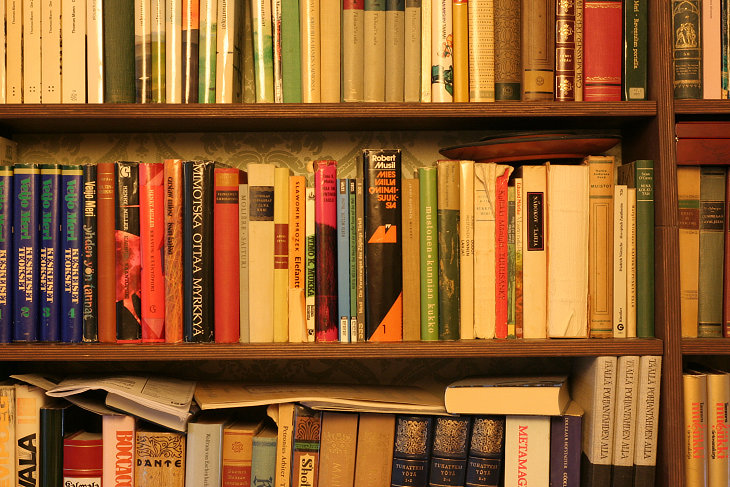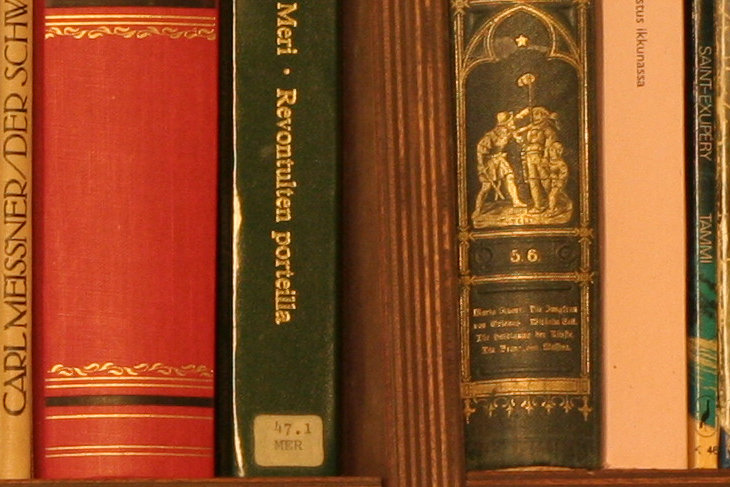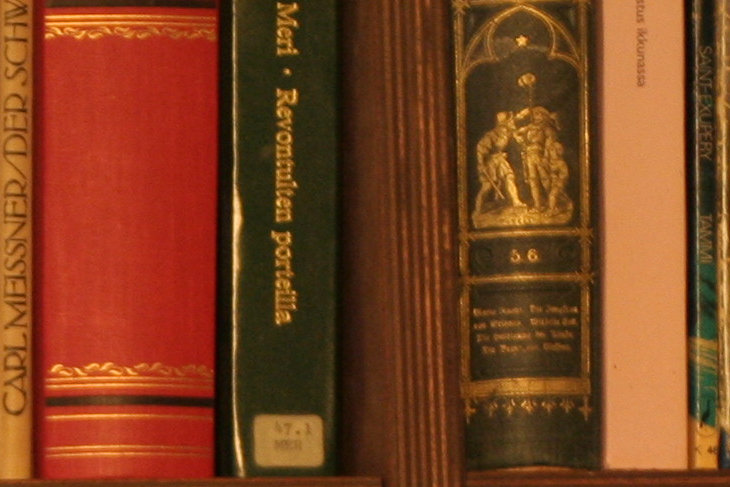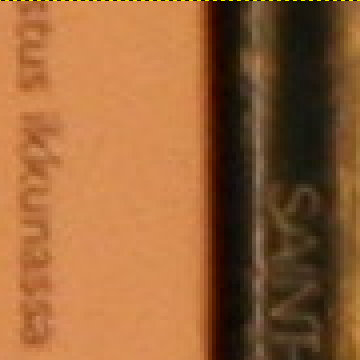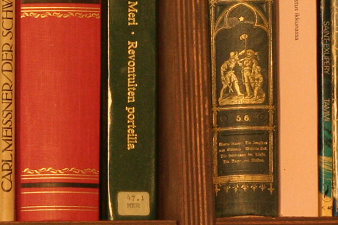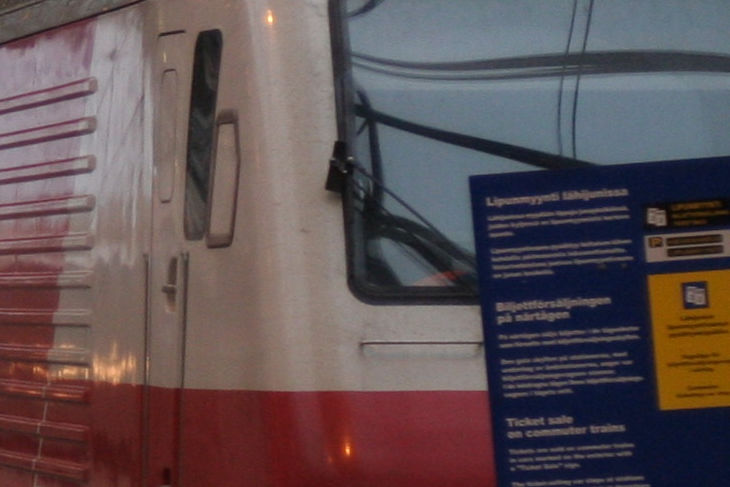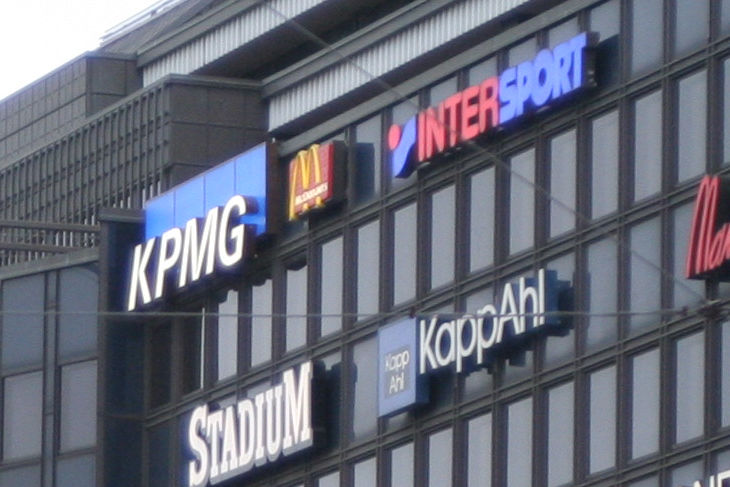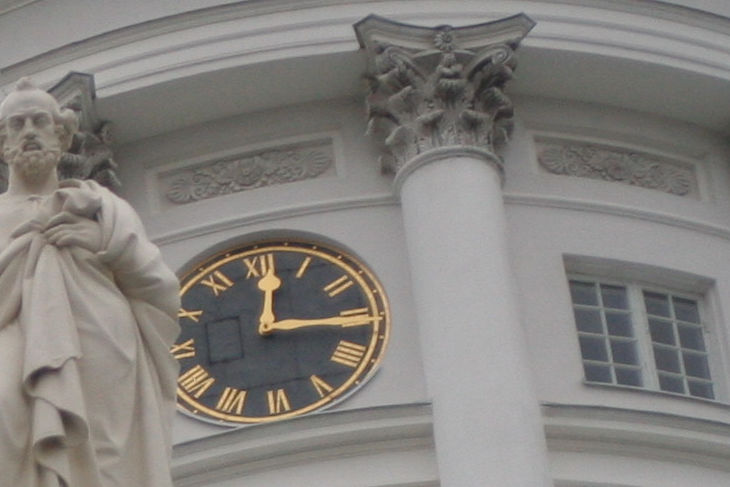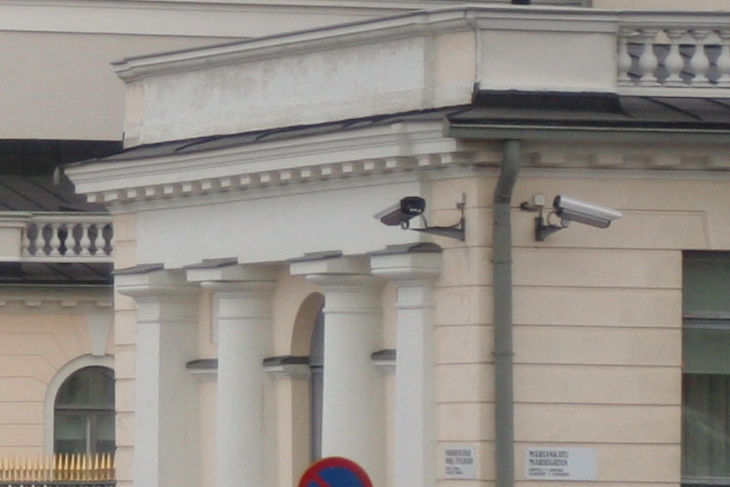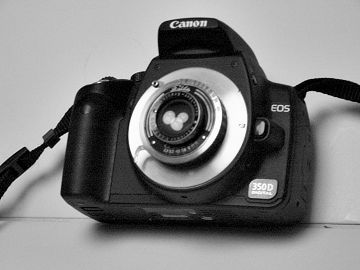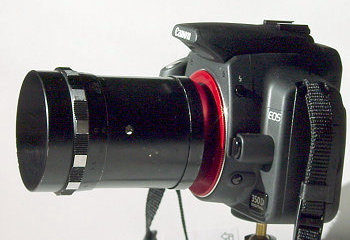The Snub Nose
Canon EOS 350D with Carl Zeiss Tessar T* 2.8/45mm
Veijo Vilva
(Page under Construction)
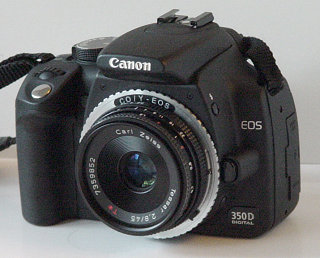
|
A NOTE CONCERNING THE BOOKSHELF TEST PHOTOS
|
|
At f/5.6:
A crop from the center at f/5.6:
A crop from the corner at f/5.6: | |
A center crop at full aperture (f/2.8):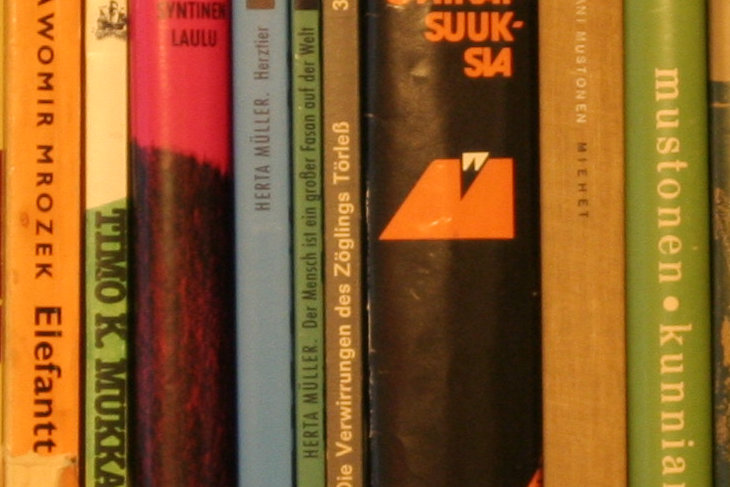 At f/2.8 the result is sharp in the center, slightly softer at the edges. The 40 cycles/mm center MTF is specified to be about the same as at f/5.6, and the minimal differences between these f/2.8 and f/5.6 center crops could be attributed to a quite possible slight misfocusing, which at f/2.8 has a more discernible effect.
A crop from the corner at f/2.8:
|
In practise, the Tessar fares quite well even at f/2.8:
Hand-held shots on an overcast, slightly misty day, in lowish contrast light
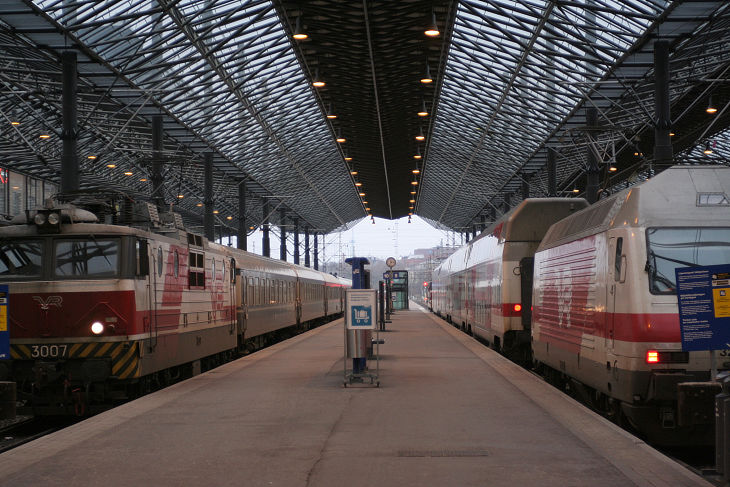 Not bad, not bad at all (Full size) The 100% crops are very slightly soft:
A crop from the center
A crop from the edge |

A quite reasonable bokeh
... and a couple of examples of not so reasonable!
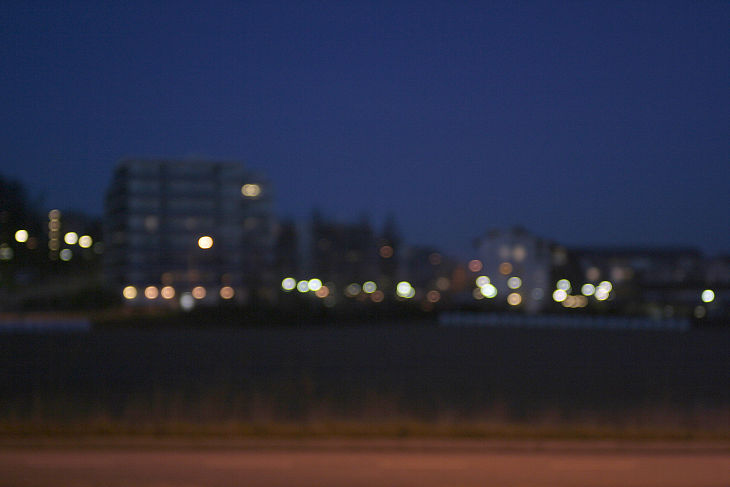
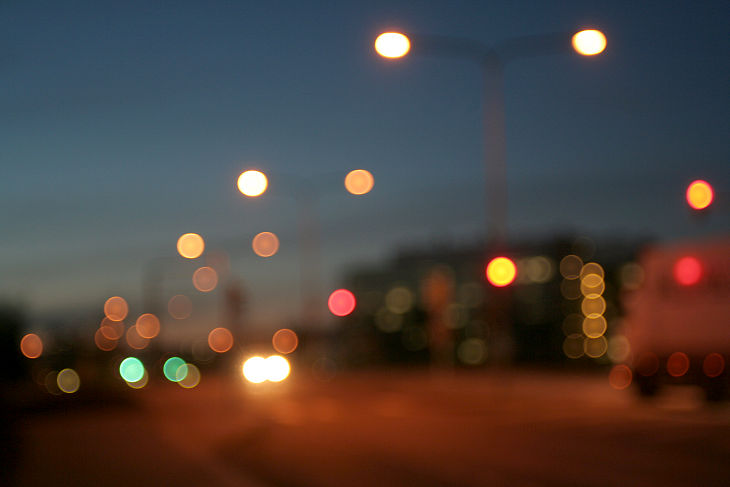

A crop from the corner |
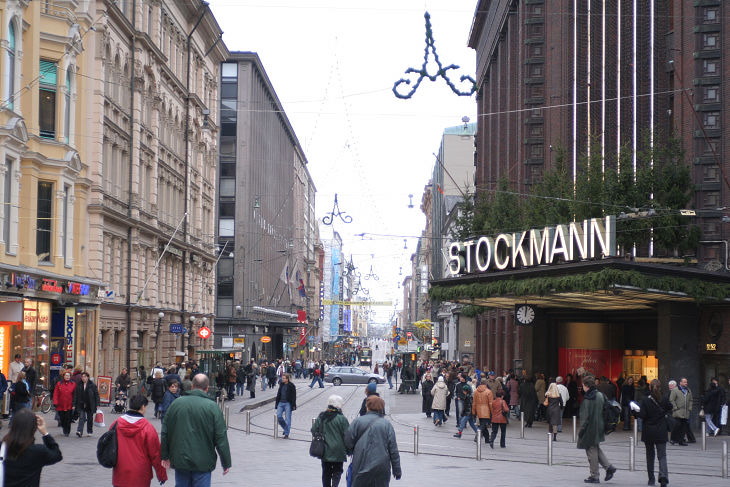

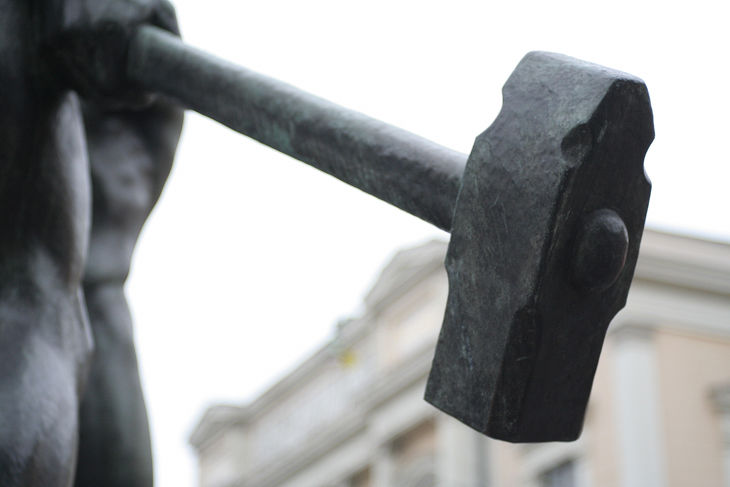
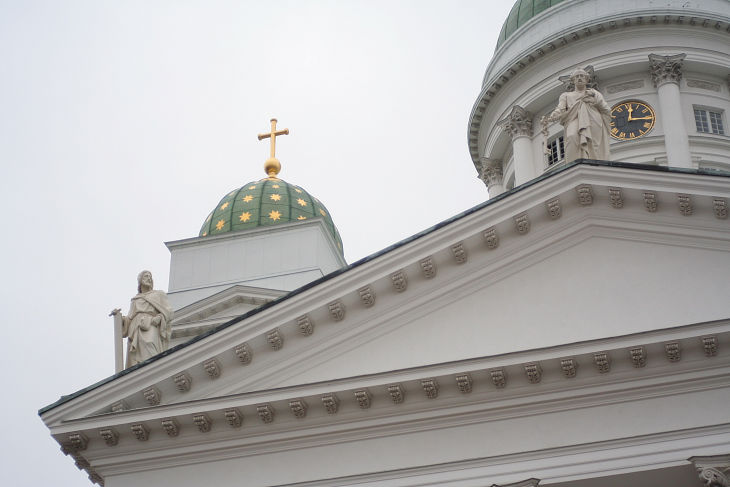
A crop from the corner |

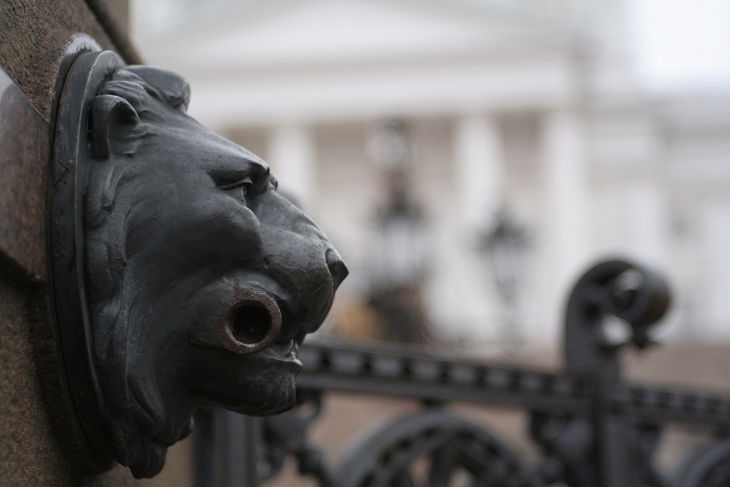
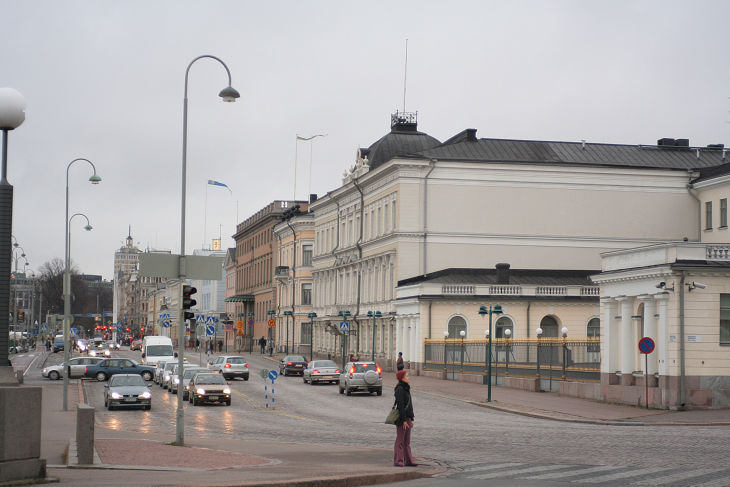
A crop from the edge |

Links
My Street CamerasI usually prefer slightly longer lenses, but the snub nose 350D + T45combination is quite handy on the street as the non-protruding lens doesn't so easily get stuck in the bag. The wide-angle FED-2 + O15 combination is even flatter with a total depth of 52mm vs. 82mm, but needs an external viewfinder (not shown) for accurate framing. The FED has a much more solid feel and more positive focusing.
My preferred walkaround lens, however, is a soft-focus meniscus,
|

|
